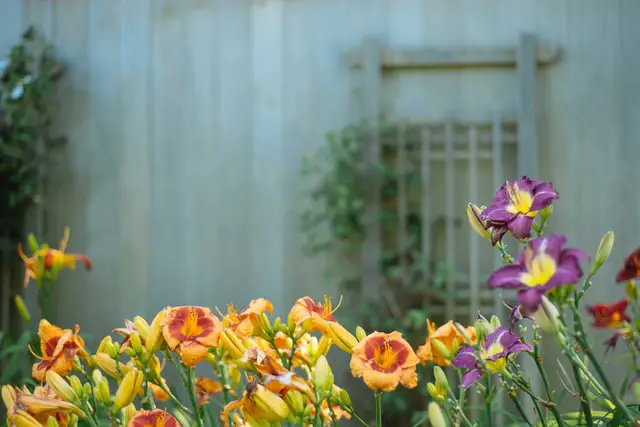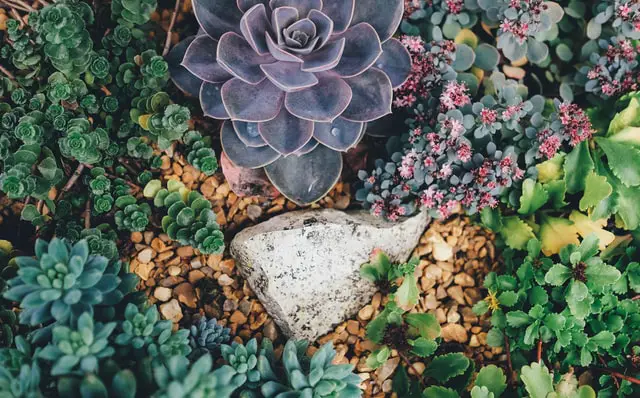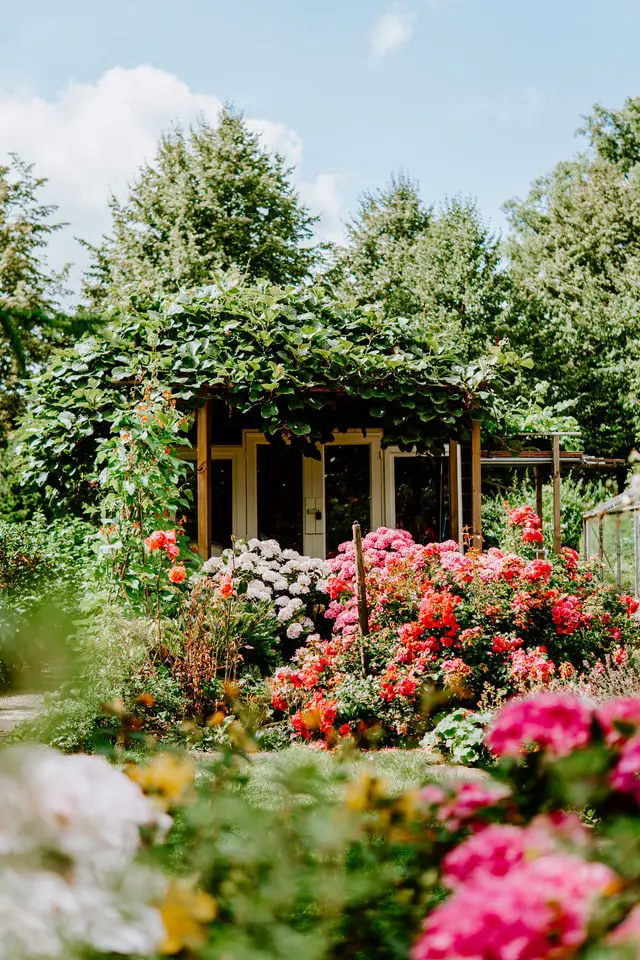With produce becoming more expensive every year and recalls for vegetables in supermarkets happening too often, it is tempting to try vegetable gardening. Growing part of one’s food is a very empowering thing to do, and it saves money over time. Properly grown greens and vegetables are safer, better tasting, and healthier than those bought at the supermarket. But, if property owners choose the wrong place for a garden, the results can be very disappointing.

Get Information Before Attempting To set up a Garden Space
Anyone considering setting up an outdoor garden needs to do a little research. So, when you contact Agron, there will be information available on setting up different types of gardens, where to set them up, and how to take care of them. In addition, researching the plants to be grown and their soil and water requirements is important. Information on gardening is available online and in books. Local gardening centers or extension offices will also have gardening information.
The first step to a successful garden is choosing the best location. Too much shade or too much sun will not be good for the plants. Then, choose greens and vegetables that grow well in the area with its special climate conditions. Invest the money and effort in preparing the garden site and protecting it from pests and wildlife before planting vegetables.
5 Tips For Choosing The Right Garden Spot

Experts in gardening suggest ways to choose the best garden spot on any property.
1. Look for a site that has at least eight to ten hours of sunlight a day. Sunlight is very important to vegetables’ growth. Six hours of sunlight is the bare minimum for the garden to do well.
2. Don’t choose a garden spot on a hill or steeply-sloping land because, when it rains, there will be runoff and erosion. A slight south-facing slope might work well for spring warmth. The soil should be well-drained and not prone to puddles after rains. Any low spots will have to be filled in and leveled.
3. Choose an open space not surrounded by too much other vegetation or trees. The space should be protected enough to avoid wind damage. The open space will allow good air circulation to avoid mold and mildew development. Protect the garden from wind to avoid plants being dried out or damaged. Several types of fencing work to protect gardens and serve as a windbreak. Some fencing types act as trellises for climbing plants like peas or beans.
4. Choose a space that is close to the house for easy accessibility for watering, weeding, and harvesting vegetables. It is simpler to properly care for a garden that is easy to get to. Gardens visible from the house can be watched for signs of animal damage.
5. Put your garden close to a good water source. Gardens often need to be watered between rain events or in dry climates. In addition to water sources, it is a good idea to have the garden close to an electrical source. All types of vegetables need good moisture to grow. The water can come from several sources, including rain, rain barrels, a sprinkler system, a drip water system, an irrigation system, and manual sprinklers. It is best to water in the morning when the water won’t evaporate too quickly. Mid-day watering is wasteful. Watering too late in the day leaves wet leaves that may get mildew or other plant diseases.

When The Perfect Space Is Found
When looking for a perfect space for a vegetable garden, there are some important factors to consider. A convenient spot might have defects that will cause problems.
1. What type of soil is in this spot?
If the soil is too sandy, it will require more water and may need to be built up to create a loamier soil. If the soil is clay or too heavy, the gardener will have to add peat moss, compost, and sand to lighten the soil. Heavy soil does not drain as well. If the soil is rocky, the rocks might have to be removed for ease of planting and to improve root growth.
Doing a soil test is important. There are soil pH test kits available. Once the soil is tested, amendments can be added to the soil to make it a better growing medium. Soil that is too acidic or too alkaline will need to be amended.
If the soil is poor, rocky, or has other problems, raised gardens might be a good option. The gardener builds raised beds on top of the ground and hauls in garden soil to fill them. If there are burrowing animals in the area, raised gardens need chicken wire, garden fabric, or other material to protect their bases from attack from below. Some gardeners choose raised gardens that are like long boxes with the tops at a convenient height for gardeners who don’t like to kneel or bend over. This type of garden is great for gardeners with limited mobility.

2. The soil in the new garden space will need to be prepared for the plants by tilling or digging down into the soil to loosen it up.
Soft, loose soil is better for the plant’s root systems. Some garden spots will need soil added. For some spots, a truckload of good garden soil is a very good investment.
3. If the garden spot is too near sources of contamination, it should be avoided.
These spots include locations too near sidewalks, road runoff, or where dangerous chemicals have been dumped in the past. This is another reason to test the soil from a proposed garden spot.
4. The garden spot chosen must be protected from both wild and domestic animals.
Deer, rabbits, squirrels, birds, snakes, raccoons, skunks, and more can ruin the garden overnight. Fencing can minimize wind damage and protect the garden from animals. Domestic animals such as cats, dogs, cows, and horses can do a lot of damage to unfenced gardens. To deter all animals, including deer, the fencing should be at least six feet tall.
Caring For Gardens
Even gardens located in the perfect spot and with great soil need regular care and upkeep. The soil must be prepared for planting every spring. At this time, it should be amended as needed. Then, each plant must be planted according to directions. The new plants must be protected from damage from the sun, insects, and wind. The new garden will need to be watered regularly, and it will need to be weeded on a regular basis. Even raised garden beds can develop weed growth. Each type of vegetable will need to be fed to grow and produce the best crops.
Gardens, when located correctly and prepared properly at the beginning, can be very rewarding to care for and to harvest food from. The garden should be checked and watered every day if there is no rain. Gardens will not take care of themselves and will wither and die if they do not receive the food, water, and care they need. The plants need to be protected from pests and insects as needed.
When a garden is cared for and allowed to grow and mature, it can produce a lot of food. There can be too much produce to eat at one time. It is nice to have the garden produced over the winter. This can be accomplished by learning to preserve the vegetables by either canning or freezing. Preserving vegetables must be done in a safe way. Extra vegetables can also be sold or shared with friends.
It is important to decide which vegetables the family will enjoy eating and which vegetables grow best in the climate conditions where the garden is located. There are gardening books and seed companies that rate plants by the areas or zones where they grow best. Factors such as annual temperatures, the length of the growing season, the amount of yearly rain, and others determine which plants will grow best.
It is also important to locate vegetables using companion planting to ensure the plants thrive. Decide how much of each type of vegetable the family will eat and plant the correct number of plants. This may be a learn-as-you-go project. Plants may do well one year and then produce next to nothing the next year. Gardening takes patience and perseverance because the weather and a lot of other factors can determine the success each year. Too much rain, bad storms, late or early frosts, drought, and rising temperatures can ruin one year’s garden.
The good food and pleasure of working in the soil with your hands make gardening well worth any trouble that might occur. Gardening is good for mental health as well as furnishing healthy, fresh food for the table. Some experts advise the new gardener start small and enlarge the garden space as their gardening skills increase. Some people start with container gardens that include a single tomato plant or salad greens. Other people enjoy an herb garden on the patio to begin their gardening experience. Thanks to Agron for consulting!
























